Table of Contents
Introduction
Smith machines are not usually marked anywhere to indicate how much the bar weighs before adding weight. You always should count the weight of the bar when keeping tracking of your progress.
Without knowing that, how do you keep an accurate log? When you jump on a Smith machine at another gym, you wouldn’t know for sure whether you’re lifting the same amount as before.
Those Tricky Counter-Weighted Bars
You can’t necessarily guess the weight from looking at the size of the bar and figuring a 7ft bar ought to be 40-45 lbs.
The bar in a Smith machine might be counter-weighted, also called counter-balanced. This means the bar is made to be lighter at rest by means of a counterweight, like this:
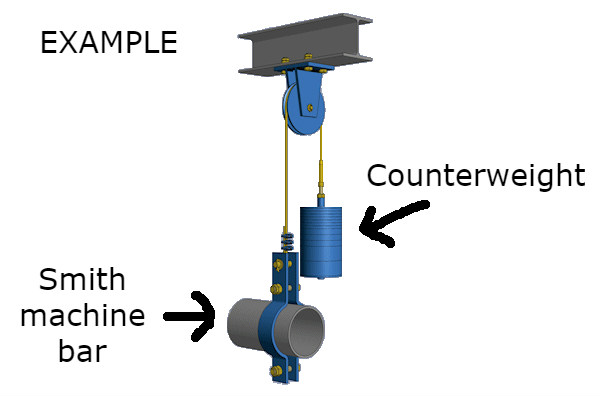
A cable goes from the Smith machine’s bar up to a pulley at the top of the machine, and a weight hangs down the other side. It’s likely hidden inside the frame.
This reduces the effective weight of the Smith machine bar down to about 15 lbs. The exact amount of effective weight left for the bar varies from machine to machine, but it’s commonly balanced to start at 15 lbs.
They could use a heavier counterweight and reduce the bar to nothing, say only one pound to make sure it doesn’t float up, but that would lead to issues with the bar flying to the top too easily, slamming against the top of the guide, and come bouncing down onto you.
15 lbs is what manufacturers have settled on as a nice starting weight for any user, even weak beginners who are just learning the movements. The extra stabilization of the a fixed plane of motion makes it easier than lifting a 15 lb freeweight bar.
How to Weigh a Smith Machine Bar
Obviously you can’t just pull the thing off and weigh it on a normal scale. It’s assembled into the machine.
Here’s two ways you can determine the bar weight with some accuracy.
Most Accurate Method: Hanging Scale
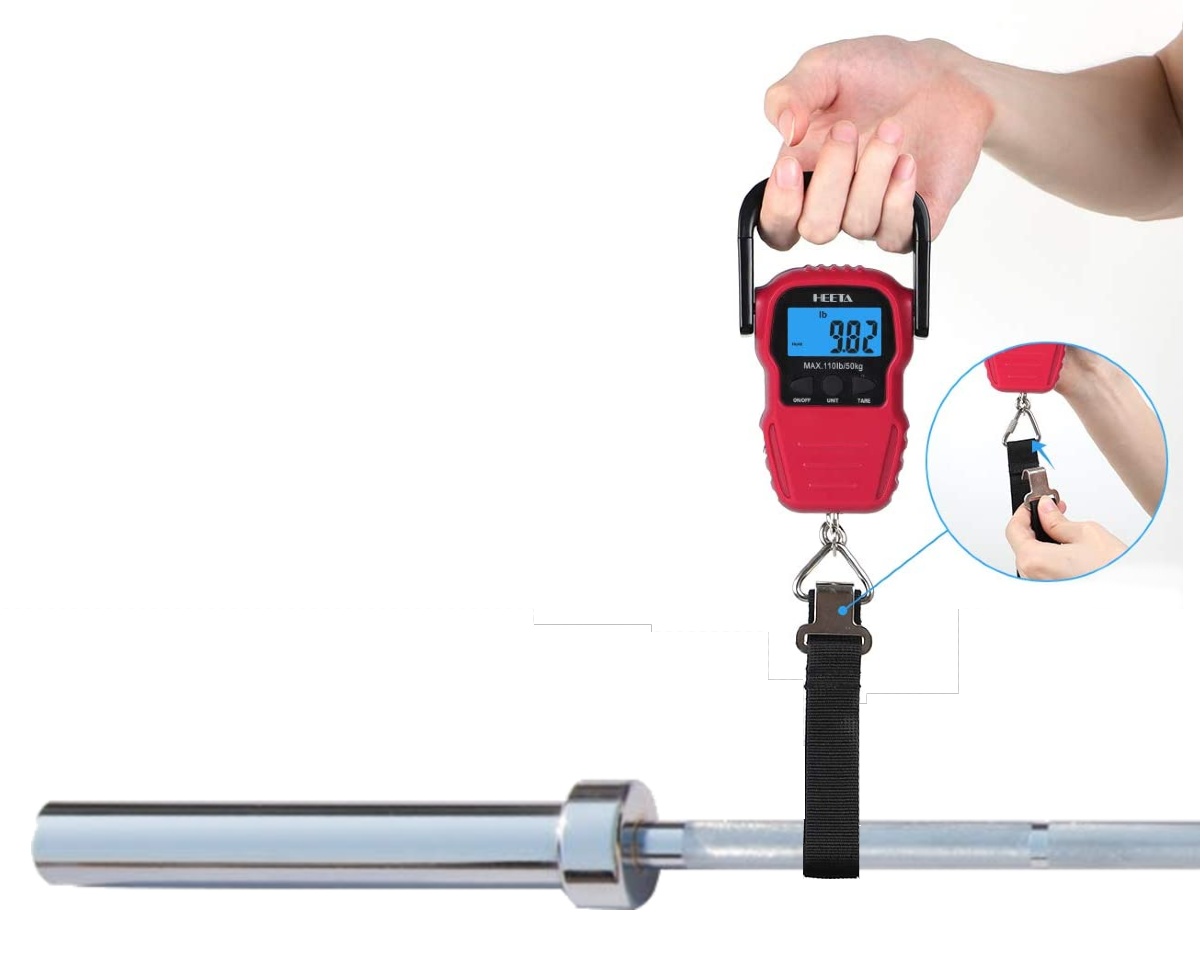
This is a hanging scale. They call it a fish scale, or sometimes a luggage scale. It’s useful for objects that you have to weigh from weird positions and can’t be set on a normal bathroom scale or postal scale.
Set the bar at your knees, and hook the hanging scale to it. Any cheap one with a strap will be fine. Carefully rotate the bar to release it from the machine lock, and you should be able to get a good reading.
I have one that I got for checking the draw force of my recurve bow. It’s cool for all kinds of things, being as it’s measuring pull force from any angle and not necessarily the object weight.
Method 2: Get a Rope
First get:
- A lightweight rope or strap, about 13 ft long
- A few weight plates
You’re basically doing as shown in this pic, counterbalancing the weight yourself to see how much it takes to balance it.
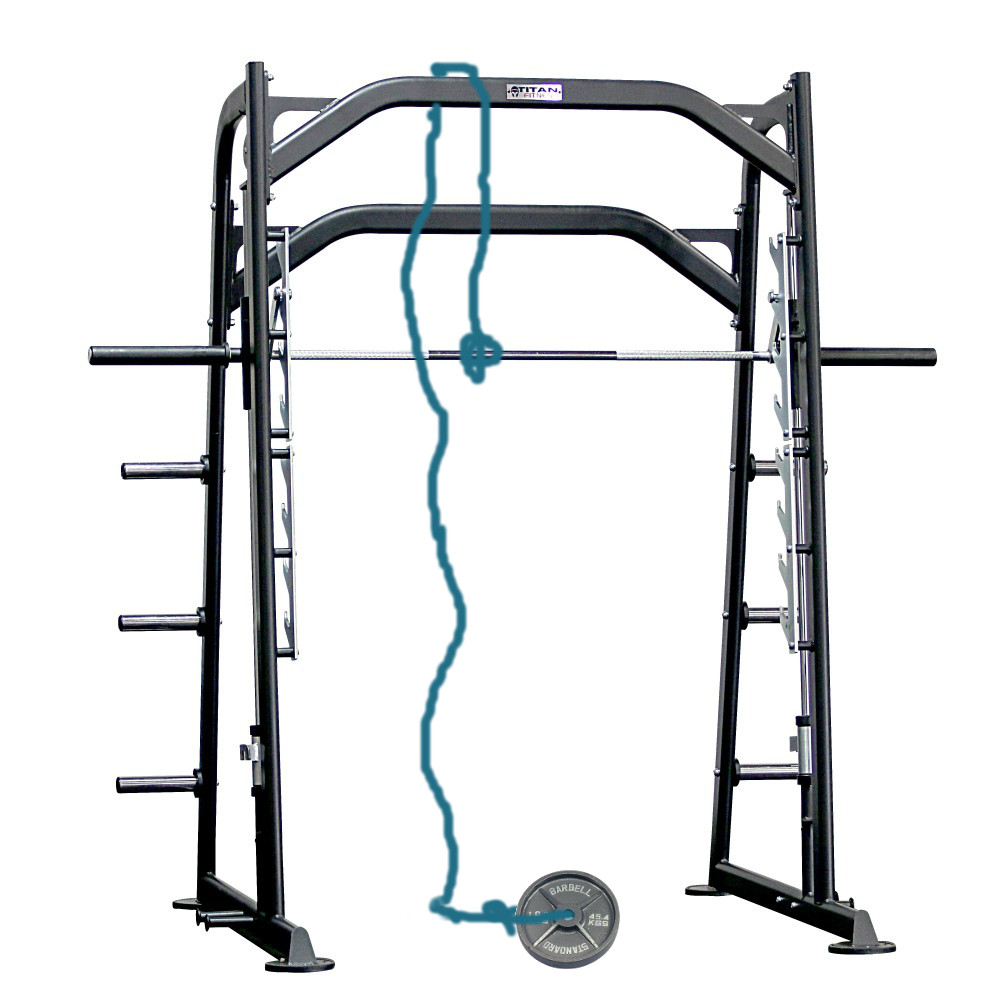
- Glance around to make sure the gym staff isn’t nearby.
- Take any plates off the Smith bar.
- Tie the rope securely around the Smith bar shaft.
- Set the bar to a little above your head height and lock it in place.
- Toss the other end of the rope over the top of the machine. You want about 4 feet worth of rope sitting on the floor.
- Tie that end of the bar securely to your heaviest plate. Given the length of the rope, the tied-on plate should be sitting on the floor.
- Unlock the bar.
- Let the bar down enough to raise the plates off the floor, then gently nudge it up and down to see if it is balanced. You will have to move it, because the rope adds a lot of friction draped over the frame above you instead of going through a pulley.
- Move the bar back above your head to lower the plates to the floor, and lock the bar in place.
- If it’s balanced, congrats! If not, repeat steps 5-8 as needed, trying on additional weight in 2.5lb increments until it balances.
By this method you ought to be able to estimate the bar’s weight within a pound or two.
Locking the bar in a high position above your head each time so that the counterweight plates you’re tying on sit on the floor will ensure you you can tie the plates while they sit on the floor so you don’t risk dropping a plate on your foot as you’re performing this scheme.
Comparing it to Freeweight Olympic Bars
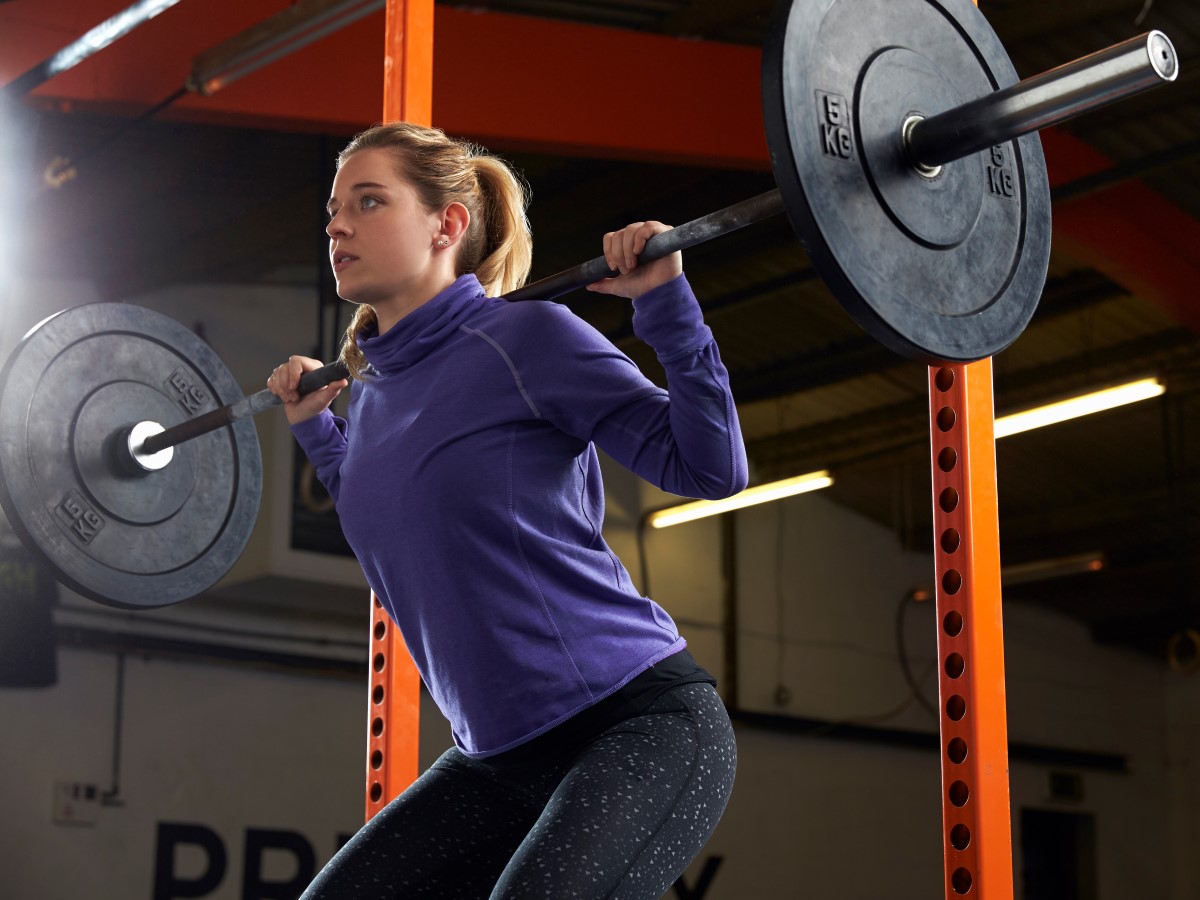
Keep in mind that a typical 7ft olympic bar at the gym weighs 45 lbs, and many people start with that weight, or more, for most exercises.
A woman’s olympic lifting bar is 35 lbs or 33 lbs (15 kg).
There are lightweight olympic bars too. Some 5ft or 6ft bars are designed to give you a starting weight of as little as 25 lbs, which is tremendously helpful given that some females or kids can’t bench press the empty 45lb bar to start with.
10lb aluminum training bars are meant for athletes training the clean-and-jerk or snatch, and even 5lb hollow steel bars are used for group cardio training classes and light fitness training.
For weight training, however, as is done on a Smith machine, 15 lbs is a reasonable starting weight.
Using A Smith Machine is Very Different from a Freeweight Barbell
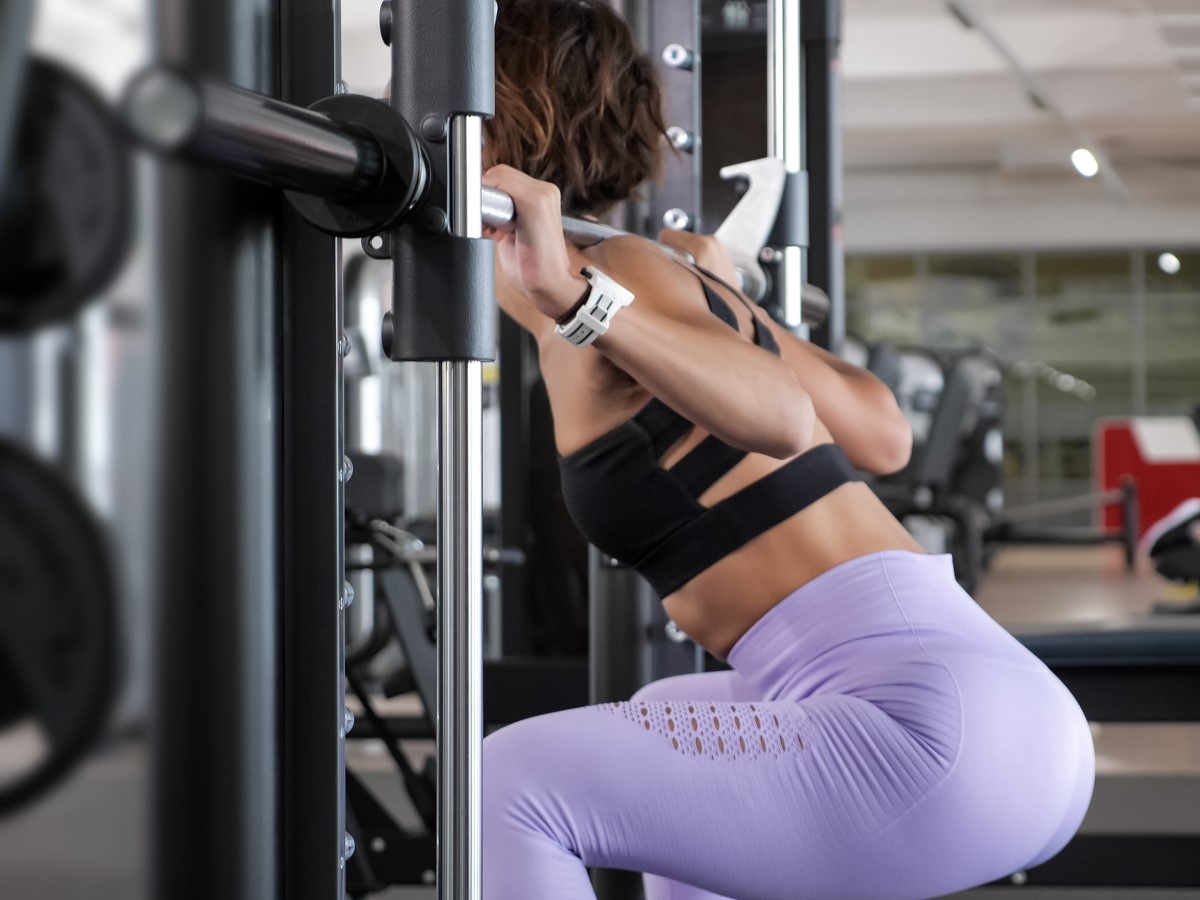
Even a well-made commercial-quality Smith machine is not the same as doing an unassisted freeweight movement on a power rack, squat rack or olympic bench press.
There are several differences.
First, understand how it moves. The bar is attached to a carriage that has bearings inside of it that slide up and down on the steel guide rods.
The bearings introduce some friction that stops you from moving the bar “too” fast, which I’ve found myself when trying to do movements on a Smith machine faster than it wants to go.
Just as important, a machine is never the same as a freeweight movement. It cuts out the requirement for you to balance the weight, which is a major part of the exercise. Balancing the weight means you have to recruit other muscle groups in your body to stabilize the weight, giving yourself more of a full workout and helping your body to get stronger as a unit. Freeweight barbell training is nothing like sliding the weight along a guide, using only your strongest muscles, with careless abandon, the way a Smith machine lets you do it.
Targeting individual muscles with limited range-of-motion machines like a Smith machine is not a good idea for the main portion of your training. Bodybuilders and certain other lifters, and people going through recovery from injuries, may use machines like the Smith machine for accessory work, but with the knowledge that they are not recruiting a large number of muscles to the extent that they would be with freeweights.
This mechanical assistance with the range of motion causes the weight numbers you’re working with to be significantly off. You can’t compare your max Smith machine squat or press to your max freeweight squat or press. You will always do more on a Smith machine.

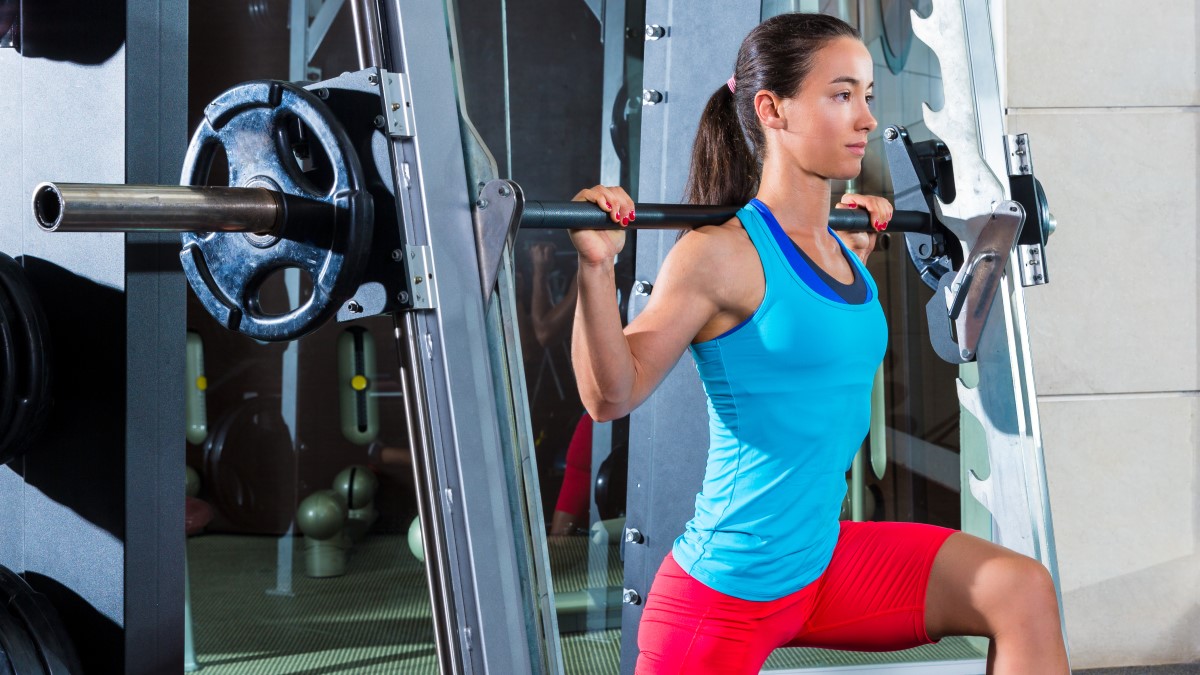
I just came back from my local Planet Fitness, bathroom scale in-hand. I weighed myself while using the Smith Machine and found out something weird and interesting! Their pulley system gives the bar variable weight! At the bottom of the stroke, the bar weighs 13 pounds and at the top, 24 pounds!
I can imagine some reasons why they reasoned that was a good idea: easier on the back at the start, less crashing at the top, smoother feel… It makes keeping track of my workout a little weird. I’ll just call it a 20 lb bar, I guess!
I wonder if there’s some friction going on with either the carriage or the counterbalance? I don’t think they would intend this as a feature.
All 4 power racks at my Planet Fitness have this variable weight thing going on. All are about the same… 10->20 lbs, 13->24 lbs or so. They are working smoothly. It’s just a thing!
Very strange! I believe Planet Fitness uses Hammer Strength Smith Machines like this one, right?
https://lifefitness.com/facility/products/hammer-strength-benches-and-racks/smith-machine
Yes, that’s what are in my (Richmond California) Planet Fitness. I won’t be able to check on the machines again until the pandemic has passed.
My test was simple, I brought in a bathroom scale and compared my weight to my weight plus the bar in various positions. The bar moves easily, it’s not stuck or anything.
When I told the staff about my findings, they were like, “Oh, ok, weird. Cool. Thanks.” :-)